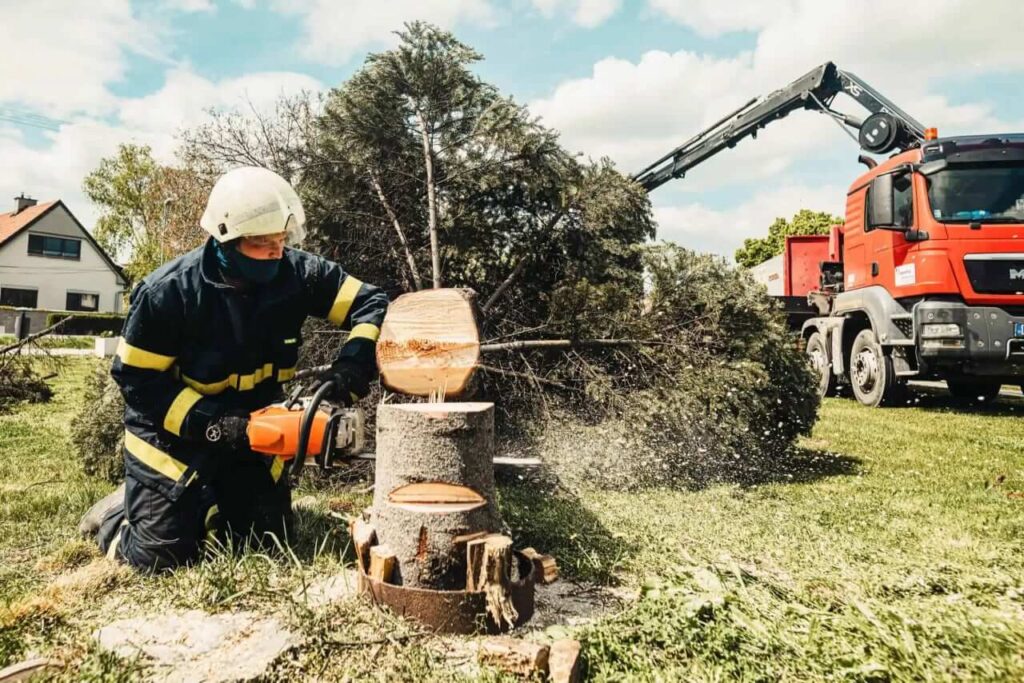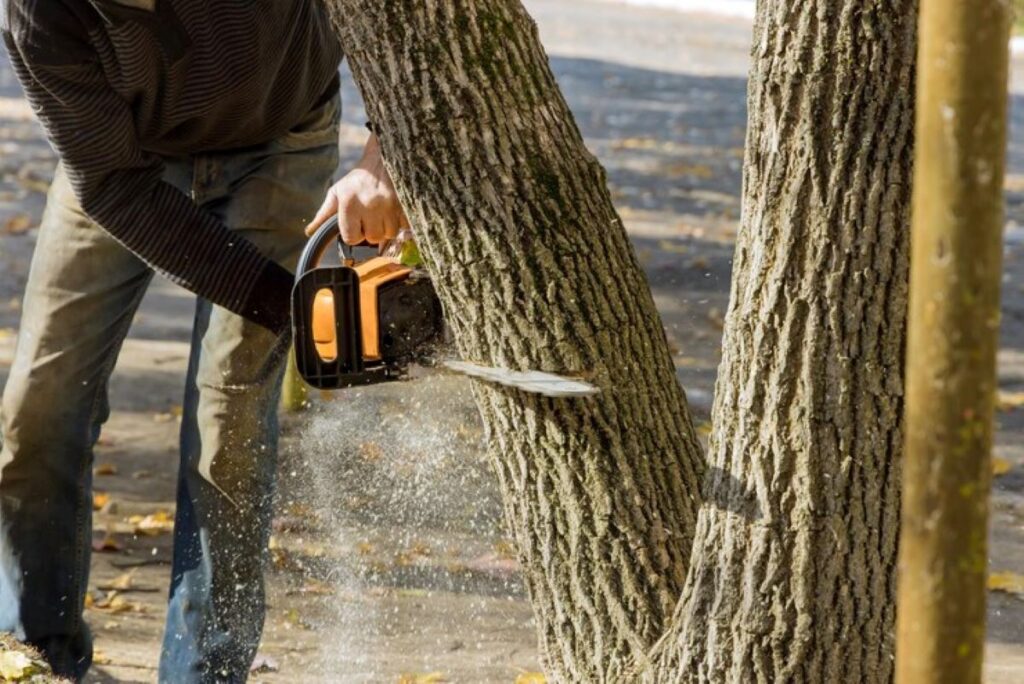For many homeowners in Sydney, trees are an integral part of the landscape, providing shade, beauty, and even increasing property value. However, there are times when the removal of a large tree becomes necessary due to safety concerns, disease, or property development. Understanding the costs associated with large tree removal can help homeowners budget effectively and avoid unexpected expenses. This article will delve into the various factors influencing tree removal costs, the average prices in Sydney, and tips for managing the process.
Factors Influencing Tree Removal Costs
The cost of removing a large tree can vary significantly based on several key factors. Homeowners should consider these elements when budgeting for tree removal services.
Tree Size and Species
The size of the tree is one of the most significant factors affecting tree removal cost. Larger trees typically require more time and equipment to remove, leading to higher labour charges. Additionally, different tree species have varying levels of difficulty associated with removal. For instance, hardwood trees like eucalyptus may require more specialised equipment and expertise compared to softer woods. Furthermore, the tree’s height and trunk diameter can also influence the complexity of the job; a towering oak may necessitate the use of cranes or elevated platforms, which can further escalate the costs involved. It’s essential for homeowners to consult with professionals who can assess the specific species and size of the tree to provide an accurate estimate.
Location and Accessibility
The location of the tree plays a crucial role in determining the cost of removal. Trees situated in tight spaces or near structures, power lines, or other obstacles may require additional precautions and equipment, increasing the overall price. If the tree is in a hard-to-reach area, such as a steep slope or a narrow alleyway, the removal process can become more complex and costly. Additionally, urban environments often present unique challenges, such as limited parking for equipment or the need to secure permits for work in public areas. The proximity of the tree to neighbouring properties can also complicate matters, as care must be taken to avoid damage to adjacent structures or landscaping, which may lead to further costs if additional measures are required to protect these areas during the removal process.
Health and Condition of the Tree
A tree’s health can also impact removal costs. Diseased or damaged trees may pose additional risks during removal, necessitating more careful handling. If a tree is dead or dying, it may be more hazardous to remove, requiring extra safety measures and potentially increasing the labour costs involved. Moreover, the presence of pests or diseases can complicate the removal process, as tree care professionals must take precautions to prevent the spread of infestations to nearby vegetation. In some cases, the condition of the tree may also warrant a more thorough assessment, potentially leading to additional costs for consultation or diagnostic services. Homeowners should be prepared for the possibility that the removal of a compromised tree may involve not just cutting it down, but also addressing any underlying issues that could affect the surrounding ecosystem, such as soil health or the stability of nearby plants.
Average Costs for Tree Removal in Sydney
Understanding the average costs associated with large tree removal can provide homeowners with a clearer picture of what to expect. While prices can fluctuate based on the factors mentioned above, general estimates can serve as a useful guideline.
Cost Estimates by Tree Size
On average, homeowners can expect to pay between $1,000 and $2,500 for the removal of a large tree in Sydney. This price range typically applies to trees that are between 15 and 25 metres tall. For trees exceeding 25 metres, costs can rise significantly, often reaching upwards of $3,000 or more. It is essential to obtain multiple quotes from reputable tree removal services to ensure a fair price.
Additional Services and Fees
In addition to the basic removal costs, homeowners should be aware of potential extra fees. Stump grinding, for example, is often charged separately and can add anywhere from $100 to $500 to the total cost, depending on the size of the stump and the complexity of the grinding process. Other services, such as debris removal or site clean-up, may also incur additional charges, so it is advisable to clarify these details with the chosen service provider.
Permits and Regulations
In Sydney, certain tree removals may require permits, especially if the tree is protected under local council regulations. Homeowners should check with their local council to determine if a permit is necessary, as failing to obtain one can result in fines and additional costs. The permit application process can also take time, so it is wise to factor this into the overall timeline for tree removal.
Choosing the Right Tree Removal Service
Selecting a qualified and experienced tree removal service is crucial for ensuring a safe and efficient removal process. Here are some tips for choosing the right provider.
Research and Recommendations
Start by researching local tree removal companies and seeking recommendations from friends, family, or neighbours. Online reviews and testimonials can also provide valuable insights into the quality of service offered by different companies. Look for providers who have a solid reputation and are known for their professionalism and reliability. Visit https://www.waverley.nsw.gov.au/residents/your_trees,_plants_and_garden/tree_pruning_and_removal to get more about tree pruning and removal.

Verify Credentials and Insurance
Before hiring a tree removal service, verify that they hold the necessary licenses and certifications. In Australia, tree removal companies should have a valid licence to operate, and their workers should be adequately trained. Additionally, ensure that the company has public liability insurance to protect against any potential accidents or damages that may occur during the removal process.
Get Multiple Quotes
Obtaining multiple quotes from different tree removal companies can help homeowners compare prices and services. When requesting quotes, provide detailed information about the tree’s size, location, and condition to ensure accurate estimates. Be cautious of prices that seem unusually low, as they may indicate subpar service or hidden costs.
Preparing for Tree Removal
Clear the Area
Before the removal team arrives, it is advisable to clear the area around the tree. This includes moving any outdoor furniture, vehicles, or other obstacles that may impede the removal process. Ensuring that the work area is accessible can help the team operate more efficiently and safely.
Communicate with Neighbours
Informing neighbours about the upcoming tree removal is a courteous gesture, especially if the tree is near property lines. This communication can help manage expectations regarding noise, debris, and any potential disruptions to the neighbourhood. It may also be beneficial to discuss any shared concerns or questions they may have.
Understand the Process
Familiarising oneself with the tree removal process can alleviate any anxieties. Typically, the removal team will assess the tree, set up safety measures, and then proceed with cutting it down in sections. Homeowners should feel free to ask the removal team any questions they may have about the process, ensuring that they are comfortable and informed throughout. Check out more about Why Regular Tree Pruning Is Essential for Healthy Trees.
Post-Removal Considerations
After the tree has been successfully removed, there are several considerations to keep in mind.
Stump Removal Options
As mentioned earlier, stump removal is often an additional service that homeowners may choose to pursue. There are two primary methods for dealing with tree stumps: grinding and removal. Stump grinding involves using machinery to grind the stump down to below ground level, while stump removal entails digging up the entire stump and root system. Each method has its pros and cons, so homeowners should discuss their options with the removal service.
Landscaping and Replanting
Once the tree has been removed, homeowners may wish to consider landscaping options for the newly cleared area. This could involve planting a new tree, installing garden beds, or laying down sod. It is worth consulting with a landscaper to explore the best options for enhancing the property’s aesthetics and functionality.
Monitoring for Regrowth
In some cases, particularly with certain tree species, there may be a risk of regrowth from the remaining roots. Homeowners should monitor the area for any signs of new growth and consult with a tree care professional if regrowth occurs. Taking proactive measures can help prevent unwanted saplings from becoming a nuisance in the future.

Conclusion
Removing a large tree is a significant undertaking that requires careful planning and budgeting. By understanding the factors influencing costs, obtaining multiple quotes, and choosing a reputable service provider, Sydney homeowners can navigate the tree removal process with confidence. Proper preparation and post-removal considerations will ensure that the landscape remains safe and visually appealing, allowing homeowners to enjoy their outdoor spaces for years to come.

